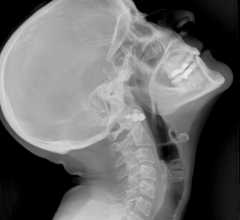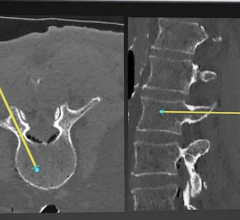
September 18, 2012 — The new Image Gently campaign's “Back to Basics” initiative has developed online teaching materials, checklists and practice quality improvement projects to help providers strengthen radiation protection when performing X-ray examinations on children, particularly as technology shifts from standard screen-film X-ray to digital X-ray imaging. The campaign emphasizes the need for a standardized approach by measuring patient body size and developing technique charts. This is particularly important as radiologic technologists use the different technologies in computed and direct radiography.
“Digital radiology has brought many improvements to imaging. However, some of the technical factors and processes used for digital imaging differ from those used in screen-film radiology. If not accounted for, these differences could result in patients receiving a higher radiation dose than otherwise necessary. This initiative seeks to make radiology medical professionals aware of the differences and how to account for them. Modern radiation reduction techniques include a return to simple techniques, such as collimation, that allow children to consistently get low-dose exams,” said Susan D. John, M.D., FACR, co-chair of the Back to Basics campaign committee.
“Children are more likely to receive X-rays than any other type of imaging exam. With the large number of manufacturers of digital radiography equipment, it is critical that radiologists, radiologic technologists and medical physicists understand how the exposure indices can help in quality assurance within their department. This can help ensure that we get the best possible images to help children while using a low dose,” said Steven Don, M.D., also co-chair of the Back to Basics campaign committee.
At least 10 million X-rays were performed on children in 2010. There is no doubt that standard X-ray exams improve and save lives. However, children are more sensitive to radiation received from imaging scans than adults, and cumulative radiation exposure to their smaller, developing bodies could have adverse effects over time.
When X- ray is the right thing to do, imaging providers are urged to:
- Measure patient thickness for “child-size” technique;
- Avoid using grids for body parts less than 10-12 cm thick;
- X-ray only the indicated area with proper collimation and shielding; and
- Check exposure indicators and image quality.
“Physicians, medical physicists and radiologic technologists have to work together to ensure quality imaging and that each patient receives a reasonably low dose while getting the study needed. The technologist often has the final opportunity to ensure that appropriate steps are taken before an image is acquired. We urge technologists to work with the other team members and to take advantage of the materials provided in the Back to Basics initiative,” said Greg Morrison, CEO of the American Society of Radiologic Technologists.
The Image Gently campaign is conducted by the Alliance for Radiation Safety in Pediatric Imaging, founded by the Society for Pediatric Radiology (SPR), the American College of Radiology (ACR), the American Society of Radiologic Technologists (ASRT) and the American Association of Physicists in Medicine (AAPM), and now encompasses 71 medical organizations serving more than 500,000 healthcare providers worldwide.
“You’re going to get the best result if you have a technologist, a radiologist and a medical physicist all working cooperatively together to create the best protocol. The technologist has the expertise of working with pediatric patients on a day-to-day basis, the radiologist has the medical expertise and the medical physicist has the technical expertise. All of these professionals need to work together to reduce dose and ensure quality patient care,” said Keith J. Strauss, MSc, FAAPM, FACR, medical physicist and Back to Basics campaign committee member.
For more information: www.imagegently.org


 March 19, 2025
March 19, 2025 







